

|
"Chief"(Mike Stern) Lead Sheet:
as recorded for his 1989 recording, JIGSAW(Atlantic). Personnel: Mike Stern (Guitar); Michael Brecker (EWI); Jim Beard (Keys); Jeff Andrews (El. Bass); Dennis Chambers (Drums) and Manolo Badrena (Bongó) Lead Sheet: Mike Stern. Soundclip: |
|
Since I learned of the passing of keyboard/composer giant Jim Beard on March 5th, 2024, it has become yet another time of great reflection on just what Jim's loss means to the community of musicians, and to me personally. I've been thinking about Jim's approach to colors, textures and accompaniment a lot, and those thoughts reminded me of one particular piece of music that we worked on together back in 1989
 while recording the "JIGSAW"(Atlantic) album with guitarist Mike Stern. As part of the repertoire of the album, the song, dedicated to Miles Davis, "Chief" was recorded. Long ago, I had transcribed Michael Brecker's magnificent EWI solo on that tune, and I remembered now that I had all of Mike Stern's lead sheets for that album in my music closet. I thought that this might be the perfect moment to share this Lead Sheet for "Chief" with everyone here, knowing that it would reveal something very special about Jim Beard. while recording the "JIGSAW"(Atlantic) album with guitarist Mike Stern. As part of the repertoire of the album, the song, dedicated to Miles Davis, "Chief" was recorded. Long ago, I had transcribed Michael Brecker's magnificent EWI solo on that tune, and I remembered now that I had all of Mike Stern's lead sheets for that album in my music closet. I thought that this might be the perfect moment to share this Lead Sheet for "Chief" with everyone here, knowing that it would reveal something very special about Jim Beard.Often times when recording an album like this, no matter how well-prepared the composer might be from months of thought about how the piece might unfold in real time - when rehearsals begin, and the group, this time including: Mike Stern (Guitar); Michael Brecker (EWI); Jim Beard (Keys); Jeff Andrews (El. Bass); Dennis Chambers (Drums) and Manolo Badrena (Bongó) enters the studio and starts to run down the song again - the form, the format, the solo forms begin to morph, develop and eventually change. The 4-page lead sheet, as you now can view it, is filled with my old markings of those alterations from the original layout. Everyone was playing from the very same lead sheet and had to make similar markings that would make sense for them. Of course, the tune is written in a Jazz musician's shorthand, trying to save space wherever it is possible. I wonder what would happen if I chose now to rewrite the entire song - would it still be only 4 pages in length? I tend to doubt that. When recording songs like this, even putting two sturdy music stands together, you don't want to be exceeding 5 pages. You don't want to have musicians reading complex music and jumping back and forth between pages. The general rule of thumb for such things is that, ideally, you want everyone to be reading from left to right, and not returning to a previous page. Obviously, that's not always possible. In this case, you can see that if you scan over the whole piece, we have to return to the [A] section 4x, and once even from Pg. 4. It's demanding. And you can see that, during each of the solo sections, the number of bars for each chord change is indicated by a single number, not actual bars - and in discussion, sometimes it just felt better to add to those numbers. So, given all of this information, this is where the brilliance of Jim Beard comes into play. You have some specific voicing information as contained within the 1st 4 bars, voicings stacked in 5ths which glue the composition together, and reappear at various times, for example: Letter [C], almost all of Letter [E] and the ending of each solo in Letters [F] & [G] - 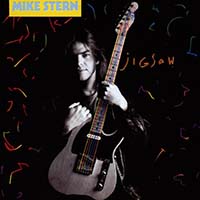 and finally in the [Tag]. Jim had to orchestrate and color all of these harmonic sounds and then, looking at the melodic material, he had to observe the chord changes and choose to color certain notes. Sometimes, filling the space, sometimes allowing the space to speak for itself. Jim, ever the romantic, brings out the best in the sections with more long tones like Letter [C]. Notice that in the return to [A], Jim chooses to color that very busy and syncopated melody. As always, Jim's accompaniment for each solo is masterful. In the end, Jim's textures create the two most crucial aspects in our music, those being mood and attitude - these elements give a piece character. You should notice that Jim's accompaniment of Mike Stern's solo is more long-note oriented, but for Mike Brecker's EWI solo, he leaves more space and uses forceful punctuations until the sustained chords return at [G2]. Then for [G'2], it's back to the punctuations over the ostinato of Jeff Andrews' bass. What can I say? This is all beautifully done by a great keyboard artist with a singular gift of imagination. Jim would never settle for stock sounds from his keyboards, no generic pads or brassy stabs - he created just about all of the sounds that you hear. And, it should not be forgotten, nor overlooked that this album was engineered and mixed by the great Malcolm Pollack, an audio giant in his own right! and finally in the [Tag]. Jim had to orchestrate and color all of these harmonic sounds and then, looking at the melodic material, he had to observe the chord changes and choose to color certain notes. Sometimes, filling the space, sometimes allowing the space to speak for itself. Jim, ever the romantic, brings out the best in the sections with more long tones like Letter [C]. Notice that in the return to [A], Jim chooses to color that very busy and syncopated melody. As always, Jim's accompaniment for each solo is masterful. In the end, Jim's textures create the two most crucial aspects in our music, those being mood and attitude - these elements give a piece character. You should notice that Jim's accompaniment of Mike Stern's solo is more long-note oriented, but for Mike Brecker's EWI solo, he leaves more space and uses forceful punctuations until the sustained chords return at [G2]. Then for [G'2], it's back to the punctuations over the ostinato of Jeff Andrews' bass. What can I say? This is all beautifully done by a great keyboard artist with a singular gift of imagination. Jim would never settle for stock sounds from his keyboards, no generic pads or brassy stabs - he created just about all of the sounds that you hear. And, it should not be forgotten, nor overlooked that this album was engineered and mixed by the great Malcolm Pollack, an audio giant in his own right! Remembering this great composition, and the performance that makes it come to life, only serves to remind me of the brilliance of our Jim Beard. What a miraculous source of beauty and energy his musicality was. I can only strongly urge anyone and everyone reading this to spend some time investigating Jim's own recordings, which must include: "SONG OF THE SUN"(1990); "LOST AT THE CARNIVAL"(1995);" TRULY"(1997); "ADVOCATE"(1999) and "REVOLUTIONS"(2008). Rest in peace dear Jim, for all of us who came in contact with you and your music, you were a great gift. BIG LOVE, your old pal, Steve
|
Mike Stern's "Chief" Lead Sheet Pages 1-4
|
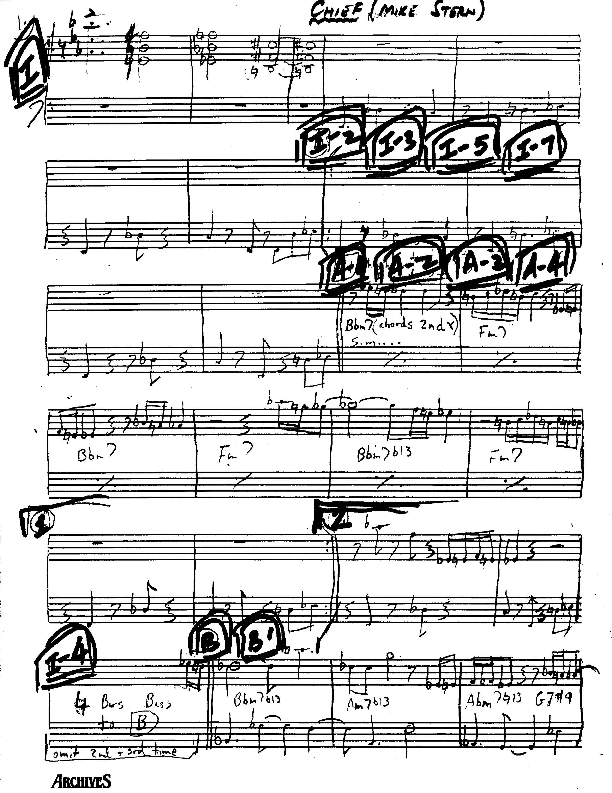 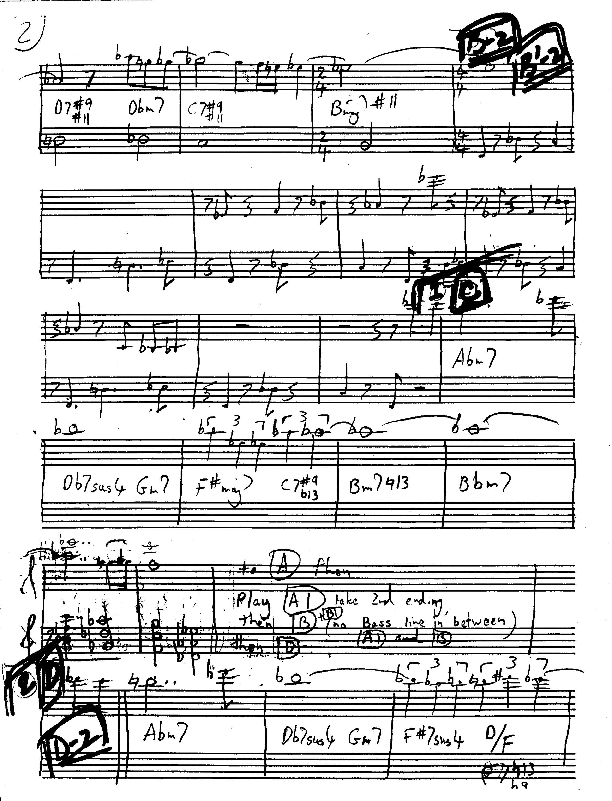 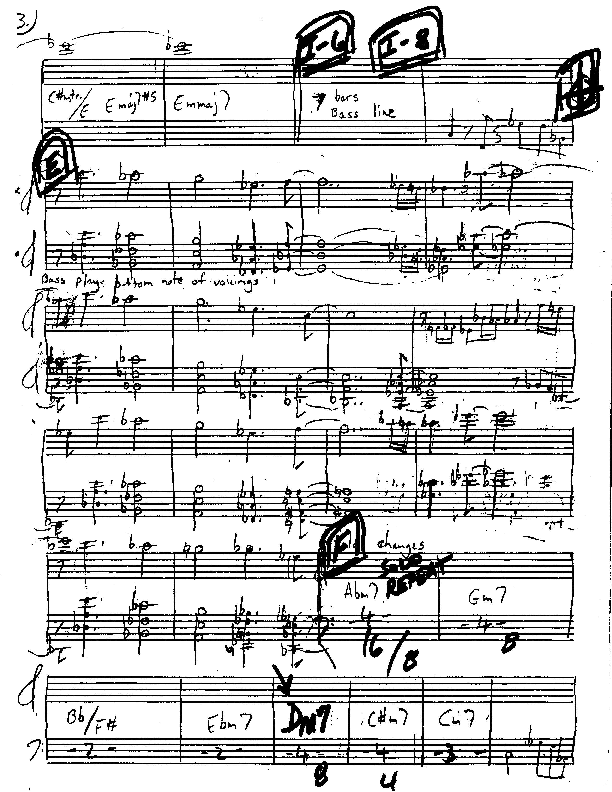 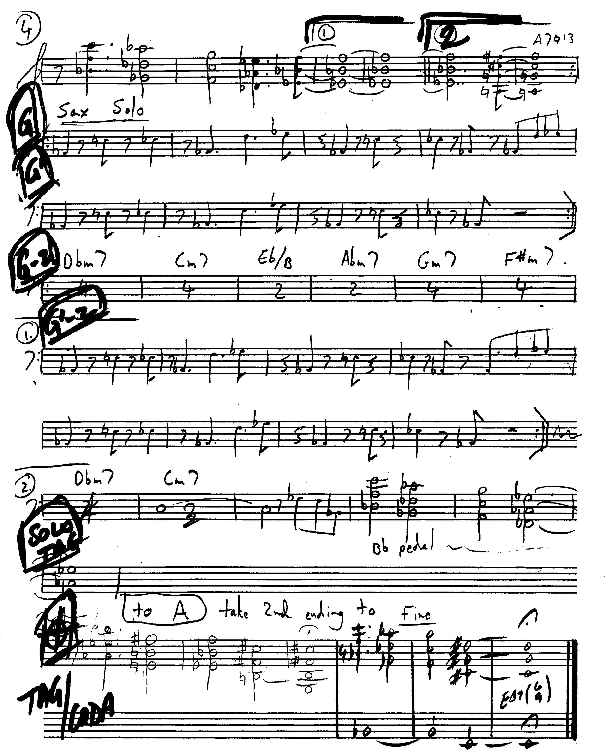
| |